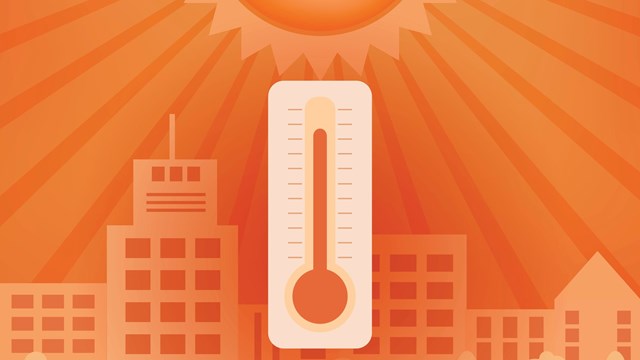Heating and cooling systems within condominium developments are called upon to provide safe, consistent energy to residents. The people who bring you heat, air cooling and refrigeration know that, and want to find what works—and what doesn’t—as technology evolves. They invest a good deal of time and effort into finding and sharing the answers to this search and similar questions about their work. What results are higher standards for buildings, better efficiency and safety for all.
The American Society of Heating, Refrigerating and Air-Conditioning Engineers—ASHRAE, founded in 1894—has a membership of more than 50,000. As an exceptionally active professional and educational organization, ASHRAE focuses on advancing heating, ventilation, air conditioning and refrigeration products, improving environmental sustainability, and encouraging the best technology through research, standards writing, publishing and continuing education.
Food For Thought
That’s a tall order, but members don’t shy away from it, attending sessions like the recent, “Are High-Performance Buildings Really Performing?” and supporting research into new product and technology development. ASHRAE chapters are busy, sustained in part by the support and involvement of ASHRAE’s executive board.
The Illinois Chapter, located in Cook County’s Evergreen Park is part of a widespread, national and international organization. Newly-elected president Laura Ludwig, who took office in July of this year, leads ASHRAE Illinois, the organization’s largest chapter. The Illinois Chapter of ASHVE, the precursor to today’s society, dates back to 1907. The Illinois chapter has a significant amount of documents and literature related to its activities over more than a century.
Promote Betterment of Society
“Our main focus is to promote the betterment of society through education of professional resources in the air conditioning, heating and refrigeration business,” says Ludwig. “My role as president is to direct and organize the chapters’ functions and to represent the chapter to the national organization as well as to represent it to the community at large.”
ASHRAE came about through the 1959 merger of the American Society of Heating and Air-Conditioning Engineers and the American Society of Refrigerating Engineers.
Membership includes engineers and others associated with heating, ventilation, air conditioning or refrigeration—such as indoor air quality and energy conservation, green/solar, HVAC, etc. Because the connection to the national/international organization is so strong, membership provides access to state-of-the-art HVAC & refrigeration technology and opportunities to participate in research and development of that technology. Education and training are another aspect that is important to membership and part of ASHRAE’s goals. Even students in the field are welcomed as members.
All told, more than 51,000 people, from more than 100 nations, make up the society—engineers, mechanical contractors, building owners, employees of manufacturing companies, educational and research institutions, government or any organization concerned with environmental control. Professionals in related fields, such as architecture and medical research, are allied with the organization.
With such a diverse membership, it’s only natural that ASHRAE is creating technology that meets current and future needs as well as catering to member interests, such as career improvement. There is considerable interest in new products, sustainable systems, green energy systems, member training, business operations and career opportunity. Both individual chapters and the national organization present training and learning opportunities to members.
ASHRAE’s Historical Committee sponsors and conducts research into the history of heating, ventilation, air conditioning and refrigeration, encouraging publication of historical and profession-related materials, as well as making them available to members. Regional and chapter historians assist in the process.
Guidance for Professionals
Ludwig says that since there are chapters all over the world, chapters operate independently then report to regional chapters for guidance, adding that it’s an extremely-structured organization.
“The reason I joined many, many years ago was for the education. My college degree [a bachelor’s degree in science and mechanical engineering] gave the theory but it never took me beyond the theory,” says Ludwig. “ASHRAE gave me resources in terms of people and education materials and seminars that allowed me to take my college education and put it into practice. It was very pragmatic. It was very functional for me to join ASHRAE.”
She’s big on ASHRAEs’ education programs and seminars. “We recently had a great seminar that was covering DOAS [dedicated outdoor air systems]. It’s a ventilation methodology that allows reduction in energy uses by using more outdoor air ventilation and then using another type of system to do the mechanical. It’s a nice environmental way to cool and ventilate a building. We are all very interested in ways to save energy, which is a big component of ASHRAE.”
Ann Connery Frantz is a Massachusetts freelance writer. Staff Writer Christy Smith-Sloman contributed to this article.







Leave a Comment